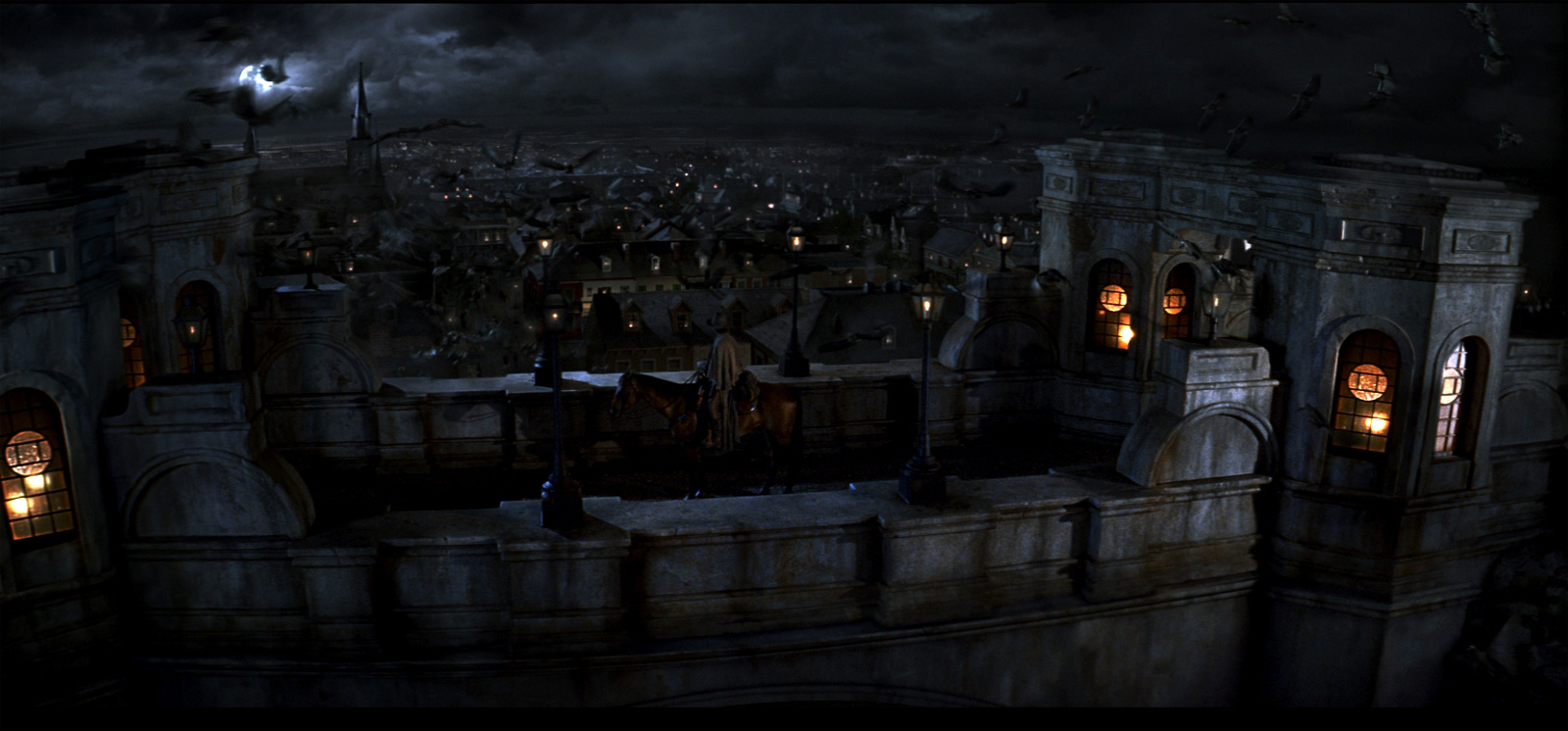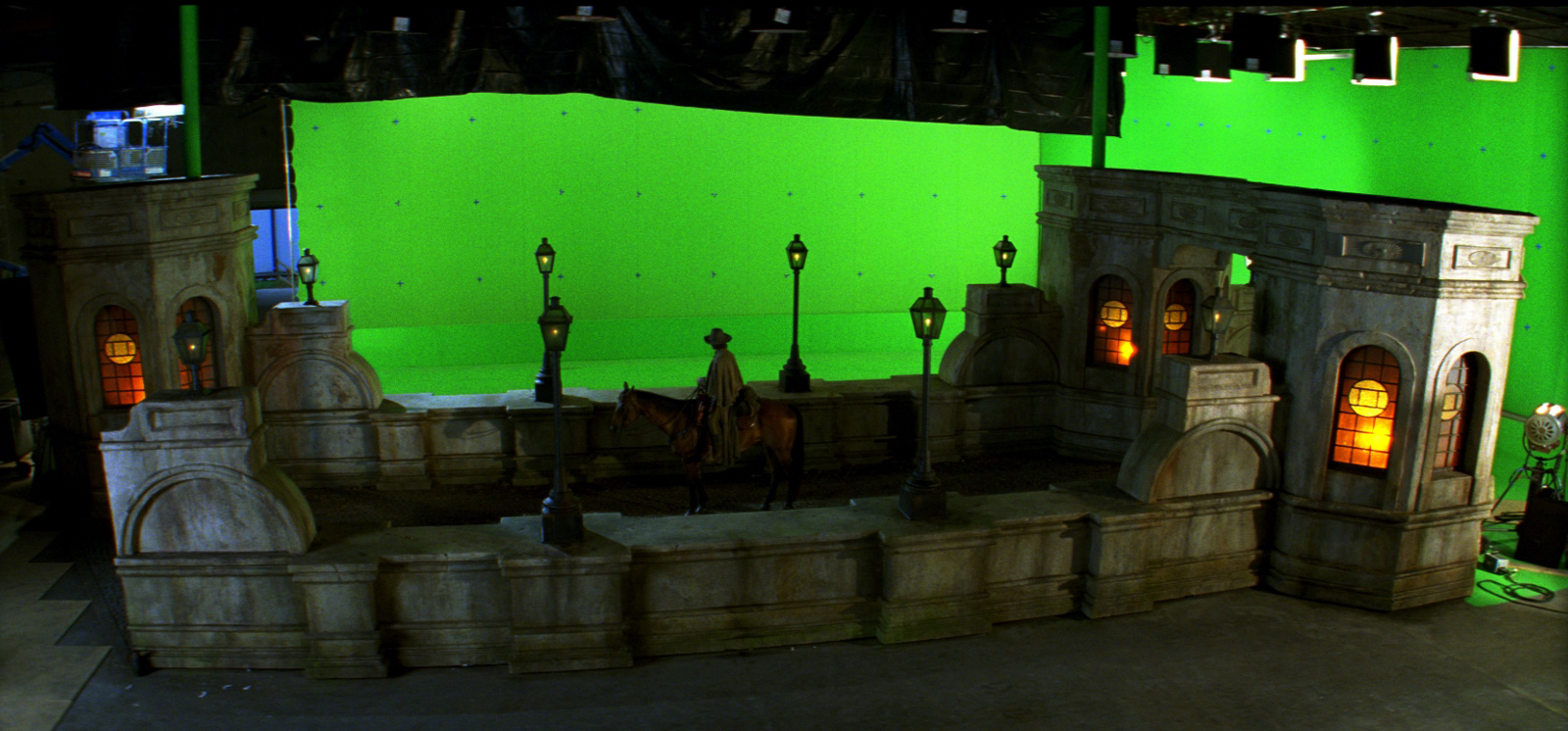Ara Khanikian evolves in the midst of visual effects of Montreal since nearly 10 years, he has gone through many studios like Buzz Image, Hybride or Rodeo FX. He has worked on projects such as THE FOUNTAIN, 300, THE X-FILES, TERMINATOR SALVATION or TWILIGHT: ECLIPSE.
What is your background?
I studied 2d/3d animation in 1999, worked freelance for a couple of years, then joined the team at Buzz for about 5 years, did 2 years at Hybride, and then joined the team at Rodeo FX around 2 years ago.
How was the collaboration with the director and production VFX supervisor?
We had a very good relationship with the director and vfx supervisor. We would touch base very regularly using video-conferencing and cinesync sessions to discuss the progress of the shots.
What did Rodeo on this show?
Our workload changed a lot over the period of time that we worked on this project. We, initially, were awarded around 20 shots, and it obviously included a fair amount of matte paintings composited with greenscreen footage. We had some shots where we had to create CG crows. Some hero ones that occupied a large portion of the screen and also large flocks, We also did a lot of tests and r&d for cg fire and smoke that would be used to enhance live action elements. Unfortunately, for story-telling purposes, these shots never made it in the final cut of the film. We ended up delivering 5 shots. They’re the shots where Jonah Hex arrives at Independance Harbour, Virginia. We created 2 matte paintings and CG crows for these shots.
Can you explain to us the creation of a matte-painting shot from scratch to final image?
We always start with research, we like getting a lot of photographs. We’ll go out and take photographs of anything and everything that could help us, we’ll get visual references from movies and paintings. We usually even shoot practical elements like smoke and fire, crowd elements, flags, etc etc.. anything that will help us take a shot to the next level. Then we do some concept work and try to nail the overall mood, the basic layout of the matte painting and, of course, the lighting and composition. We present it to the director and when he’s happy with the result, we start with the actual matte painting work. In our pipeline, the matte painters will usually work in Photoshop while the matte painting TDs start prepping a 3d scene with the correct camera infos and start the modeling that will be used for the camera projections. Once that’s approved, it gets rendered and handed off in a couple of hi-rez layers to the compositor where it gets composited with all the other elements for the shot, which usually involves practical elements (like smoke, fog, and anything that would give more life to the shot). In one of our shot, we even had crowd and people walking around, shot on greenscreen that would be used to populate the streets of the matte painting.
What are the references that gave you the director?
For this project, we looked a lot at old photographs of New-Orleans. The style and architecture of that city was a great match to what the director wanted to see. We also photographed some of the older buildings in Old Montreal that looked great because of the moody dimmed lighting that’s present there.
Have you done CG crows?
Yes, we did. All the crows in our shots are CG. They were all done in XSI and rendered with Mental Ray in openEXR. We worked with another Montreal based facility for the crows. We had 2 hero shots of crows where we would see them “up close and personal”. These 2 crows were hand-animated and they look and feel really awesome. We also used a more procedural approach for the flock of flying crows that we added in another shot.
Did you used lots of 3D projection for your mattes?
It depends. If the shot is static or has very slight camera movements, we usually don’t need to do any 3d projections, the matte painting is simply exported to the compositor who will take care of the tracking. For some other shots, we will need to match-move (usually in 3d-equalizer), create a 3d scene, and then use camera projections.
What was your margin of creativity on this project?
We actually had a lot of creative input on our shots and the director was very open to our suggestions.
How long have you worked on this movie and what was the size of your team?
We worked for about 3 months, and our team varied between 5 and 10 artists.
What was the challenge on this film and how did you overcome it?
One of the biggest challenges we had was a technical one. This film was entirely shot with an anamorphic lens and one of the shots that we worked on had a very wide angle lens that created a huge amount of lens distortion. The shot had a fairly complex and long camera move (I believe it was a 21 seconds shot) that showed Jonah Hex on his horse arriving on a bridge and the camera would gradually pull out and reveal the city of Independance Harbour, Virginia. Only part of this bridge was built on set and was filmed in front of a greenscreen. We created a CG extension to this bridge, the matte painting of the city and a flock of CG crows. Dealing with this much lens distortion in a big establishing shot with a lot of perspective and parallax change had its share of technical challenges. The matchmove and tracking were fairly complex because of this. In the end, it worked out beautifully.
We had also done a lot of r&d and tests on a sequence where Jonah Hex would get his face burned with a branding iron by his nemesis, Quentin Turnbull. We had to create a very hot looking branding iron, and fumes and smoke effects coming out of the tip and especially find a convincing look of Jonah’s skin melting as soon as the brand would touch his skin. It was very gory! His skin was melting and burning, smoke was coming out of everywhere! The director decided to go with a much more graphic look that looked a lot like the comic book for that whole scene.
What are your softwares?
For compositing, we used Flame and Nuke. The matte painting department mostly used Photoshop and Softimage|XSI.
What did you keep from this project?
It was a very interesting and fun project! It allowed me to discover the dark and mysterious universe of Jonah Hex which I really didn’t know.
What are your next projects?
We just finished our work on RESIDENT EVIL: AFTERLIFE, and are starting SOURCE CODE and THE IMMORTALS.
What are the four films that gave you a passion for cinema?
I guess I’m part of a whole generation that really got inspired by classics such as STAR WARS, E.T., CLOSE ENCOUNTERS OF THE THIRD KIND, INDIANA JONES and BACK TO THE FUTURE trilogies.
A big thanks for your time.
// WANT TO KNOW MORE?
– Rodeo FX: Official website of Rodeo FX.
////
Rodeo FX – credits list
Visual Effects Supervisor
Sébastien Moreau
Visual Effects Producers
Nina Fallon
Benoit Touchette
Visual Effects Coordinator
Josiane O’Rourke
Compositors
Ara Khanikian
Laurent Spillemaecker
Vincent Poitras
Simon Devault
Christophe Chabot-Blanchet
Art Director, Matte Paintings
Mathieu Raynault
Matte Painters
Frédéric St-Arnaud
Sithiriscient Khay
3D Artists
Jeremy Boissinot
Moïka Sabourin
Marilyne Fleury
Daniel Rhein
Camera Matchmove
Jean-François Morissette
System Administrator
Curtis Linstead
© Vincent Frei – The Art of VFX – 2010







Thnks for the details of vfx of Jonah Hex.